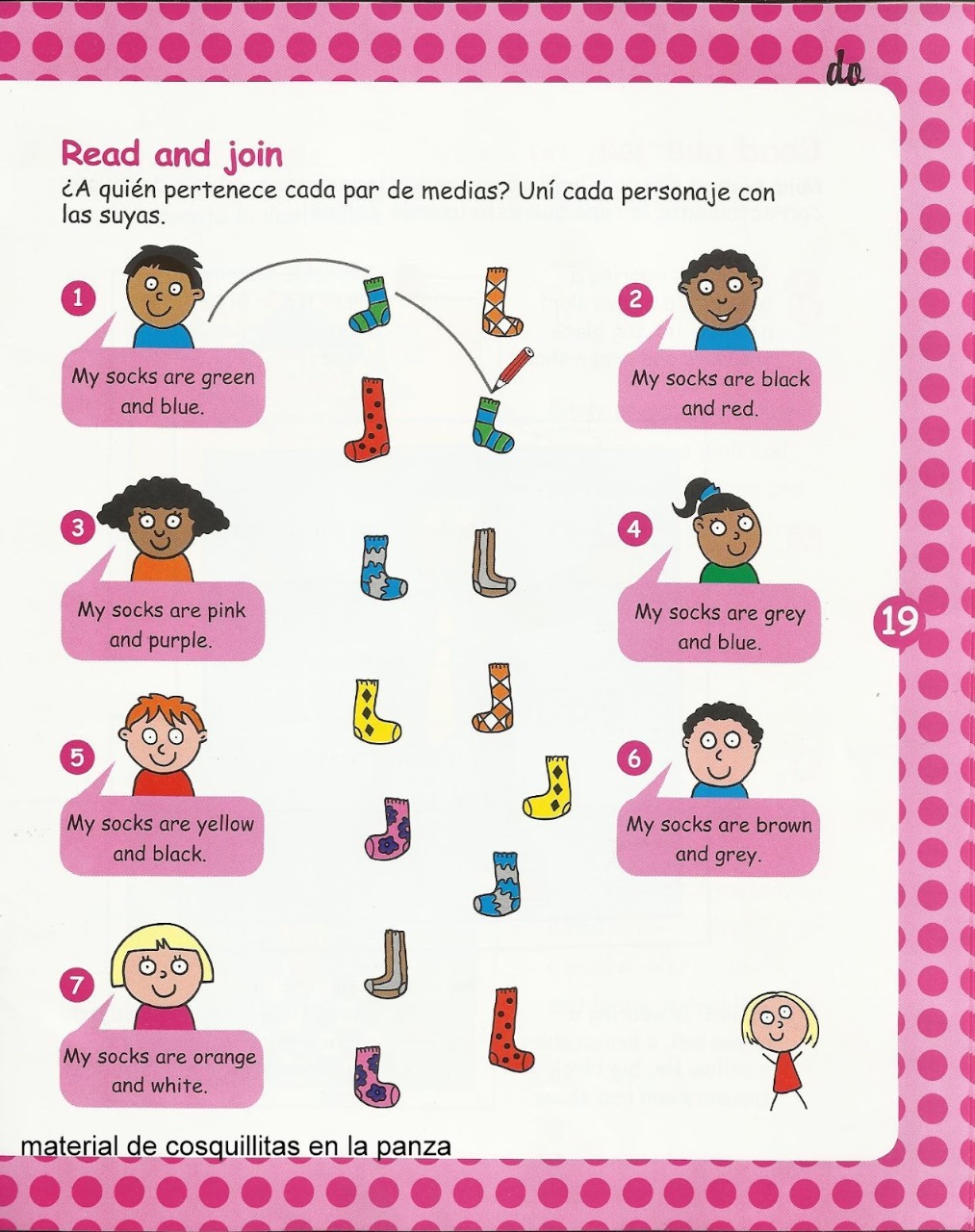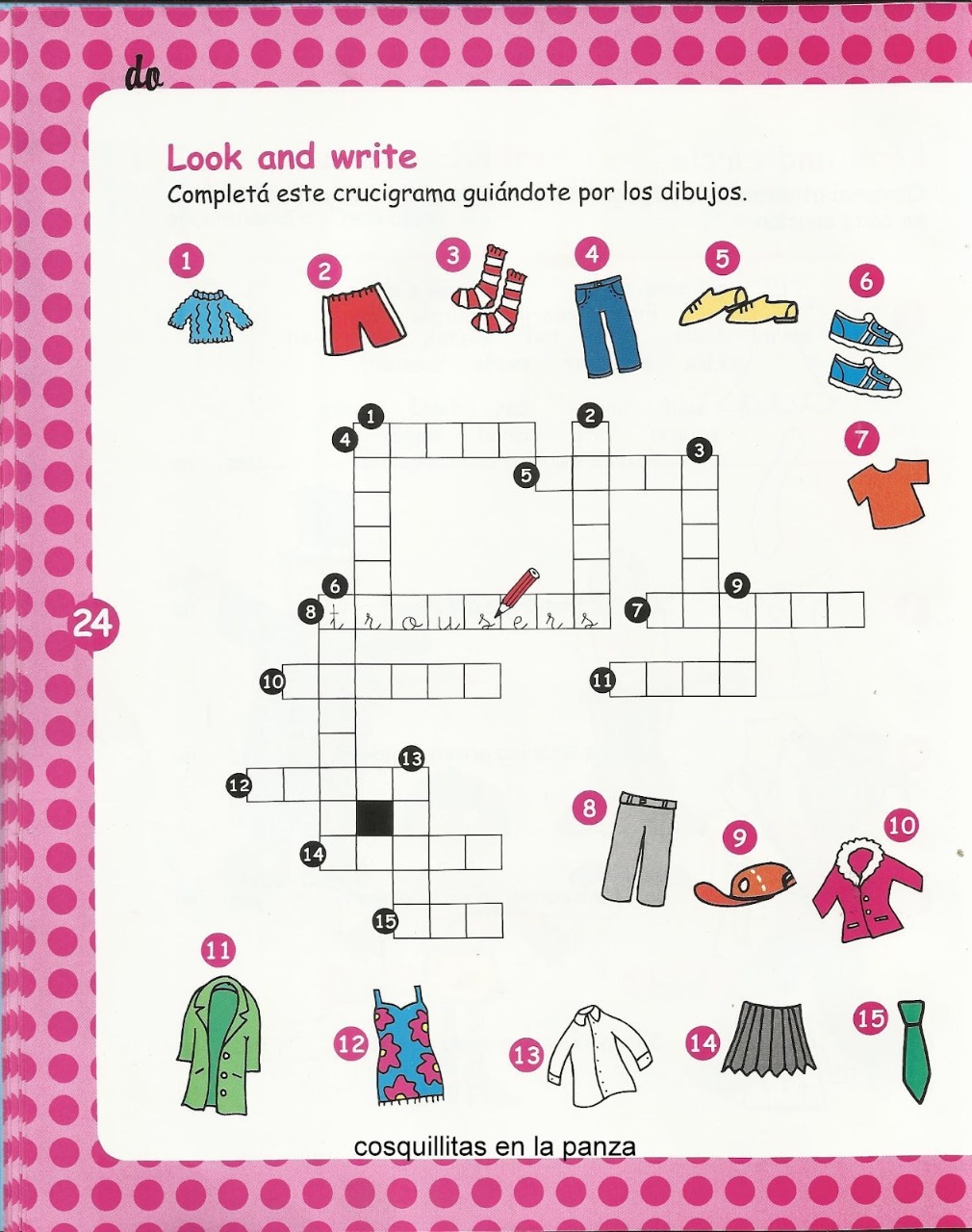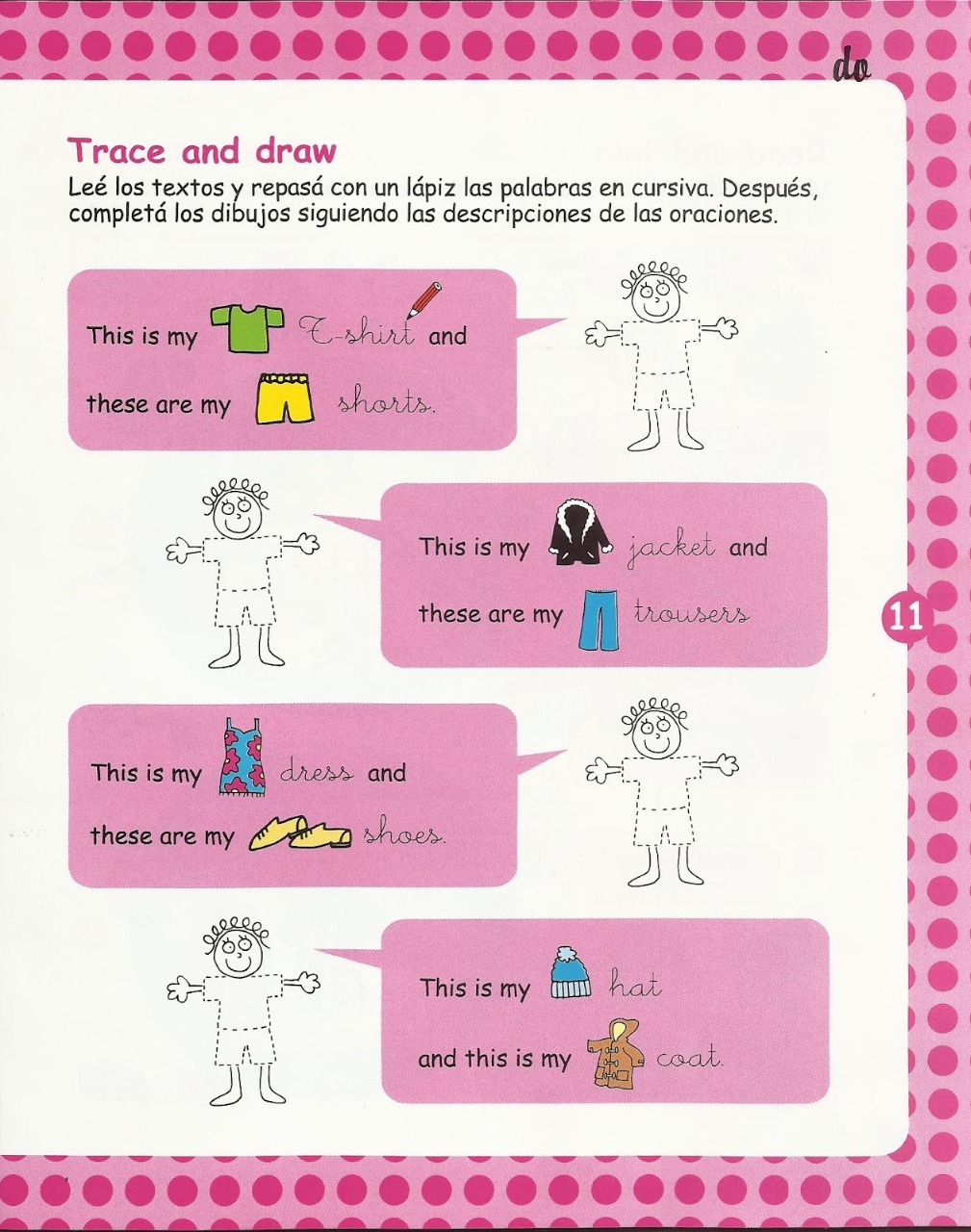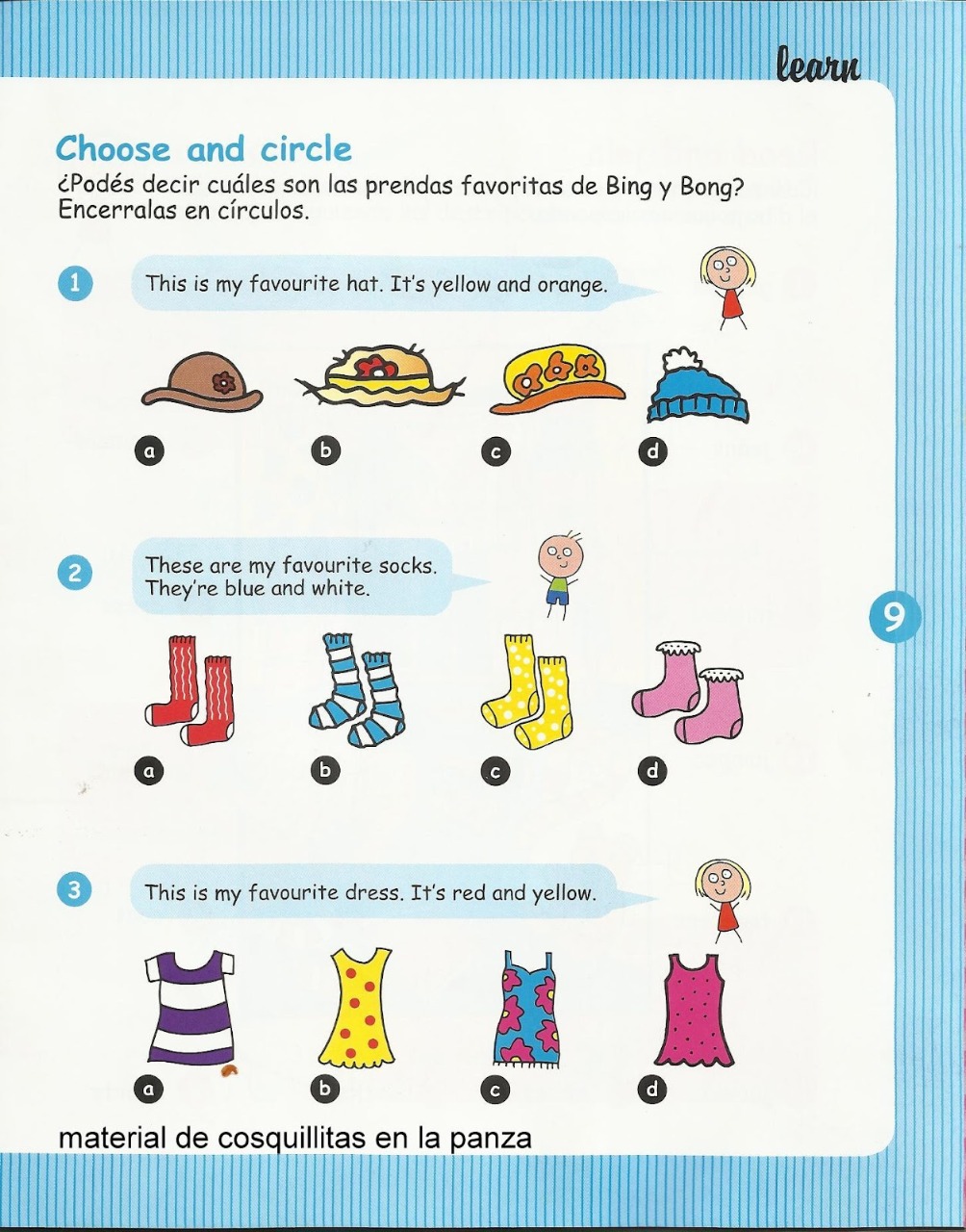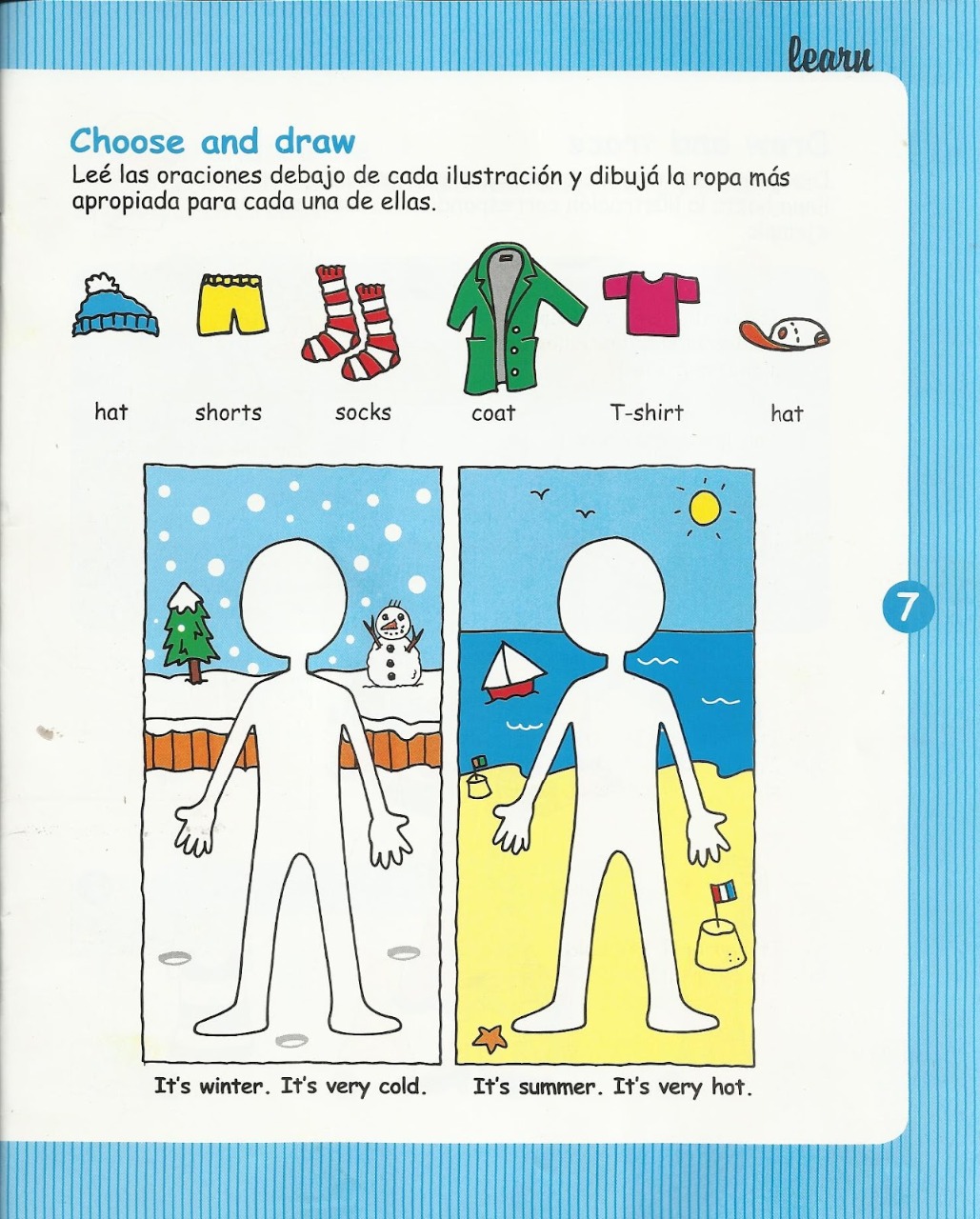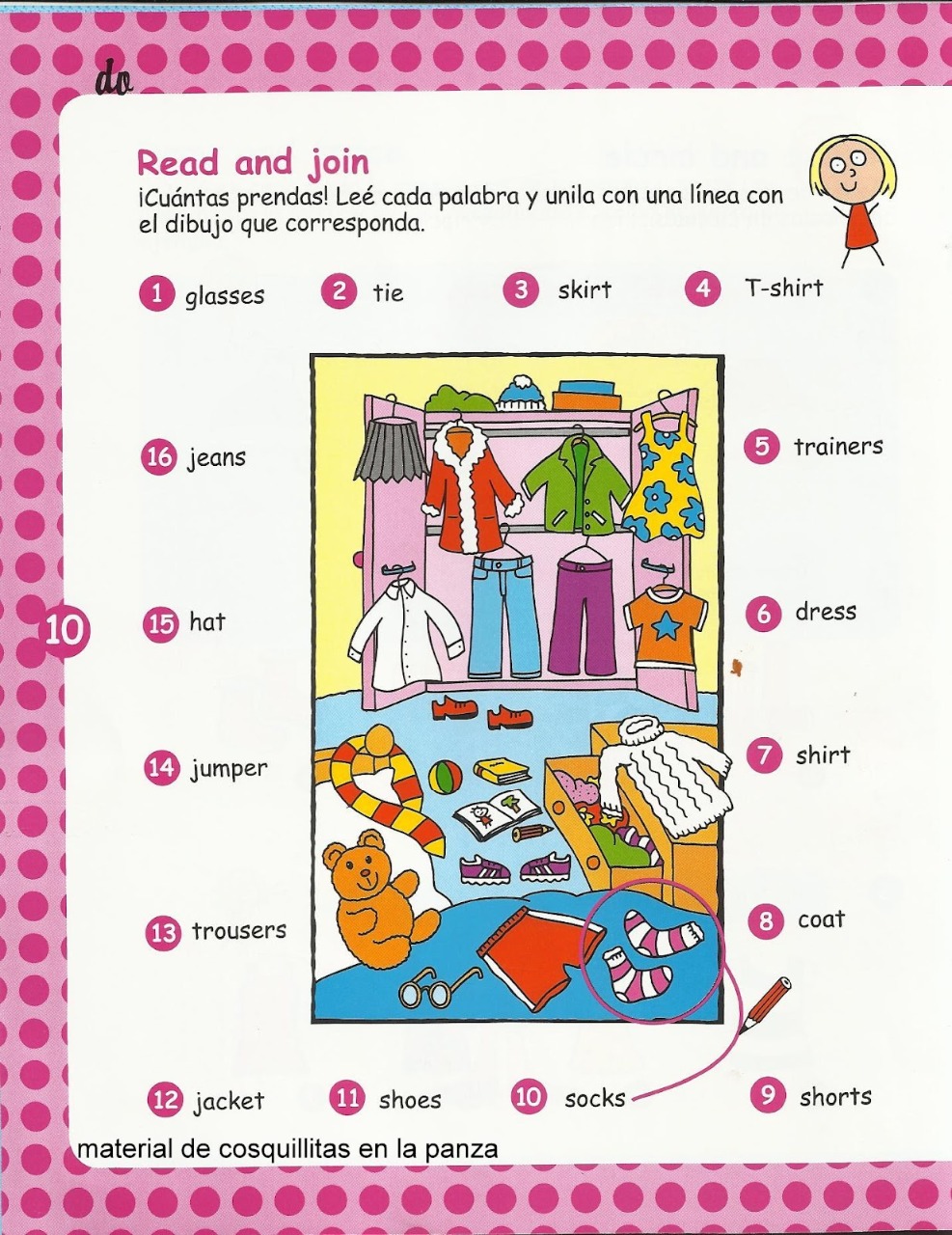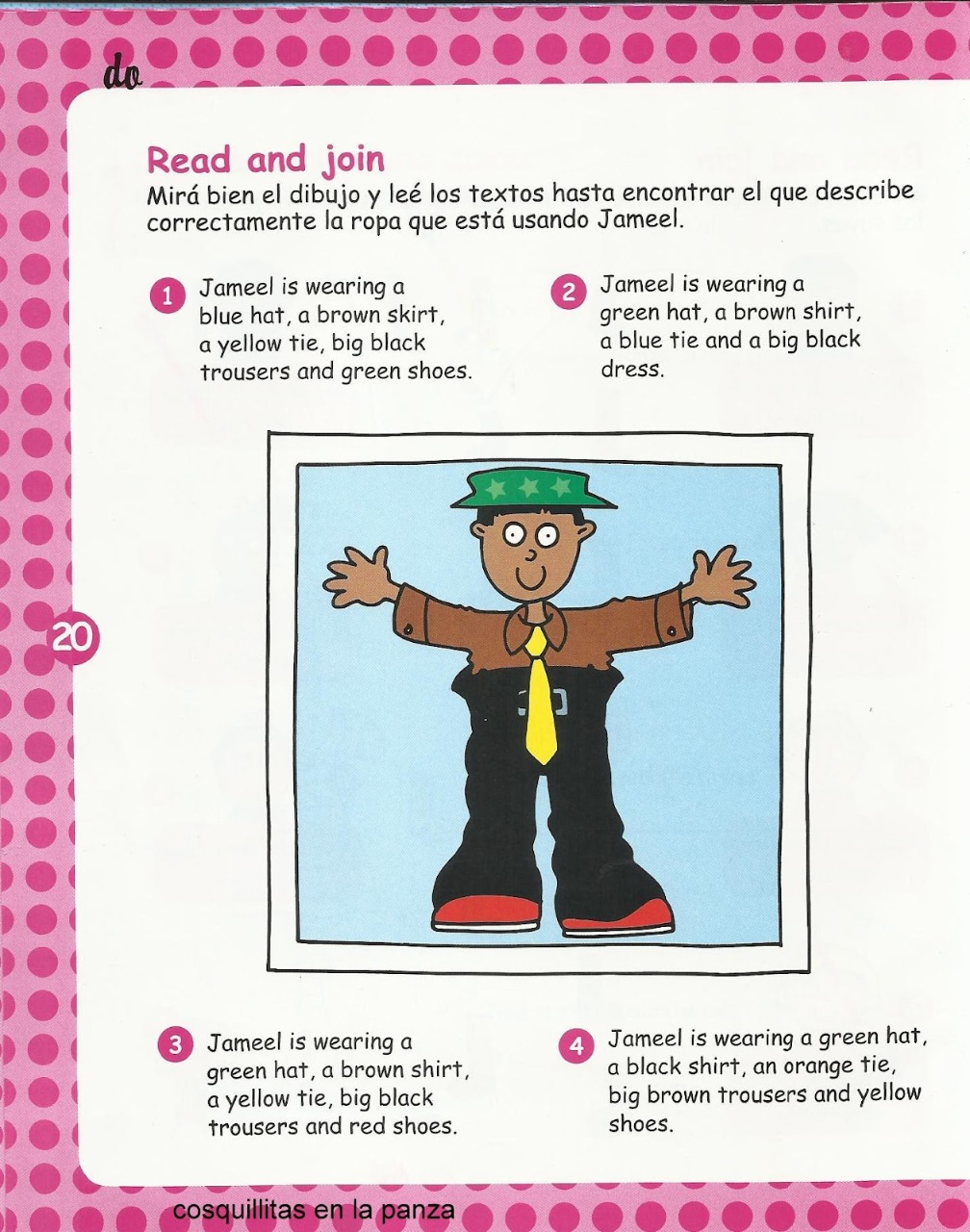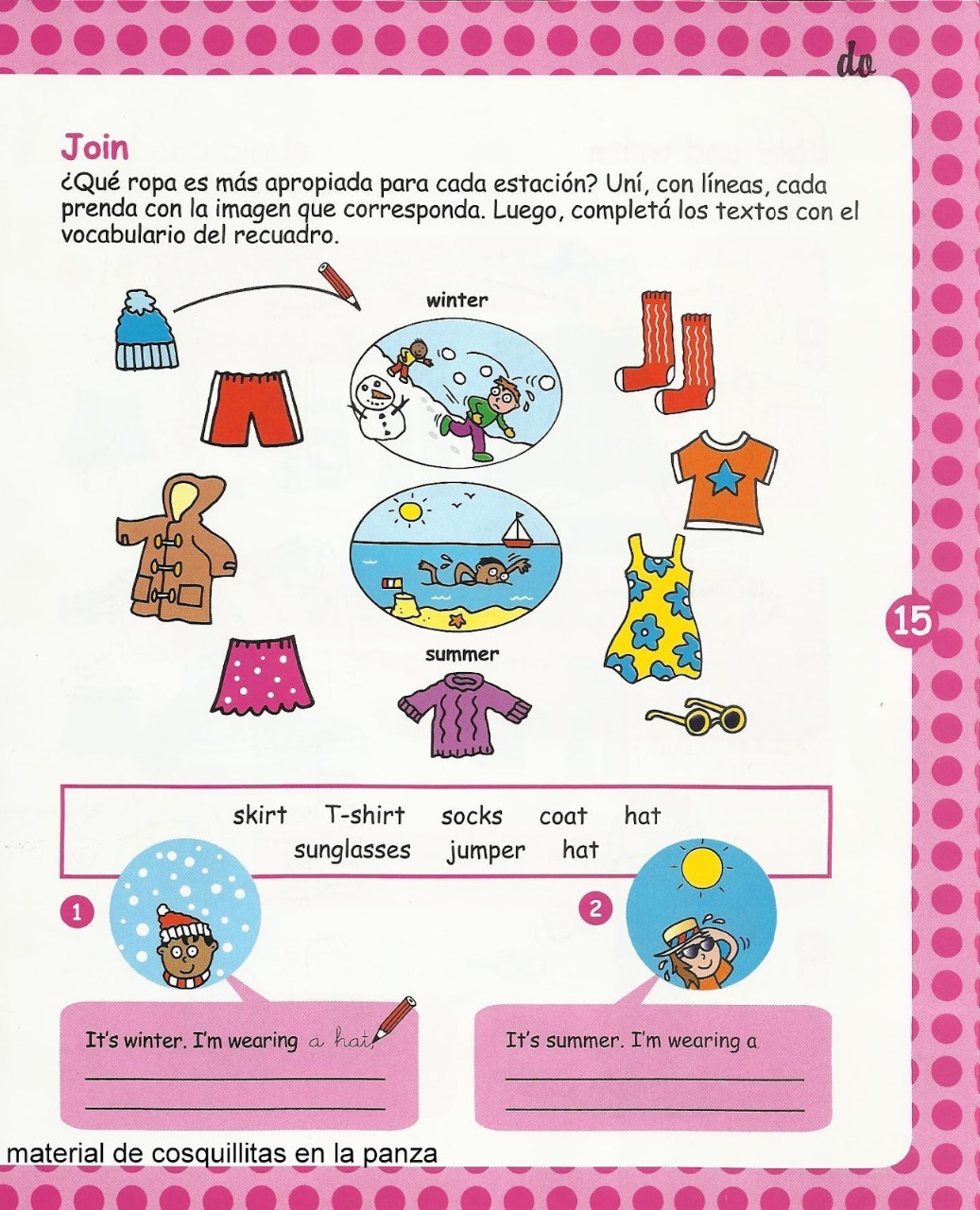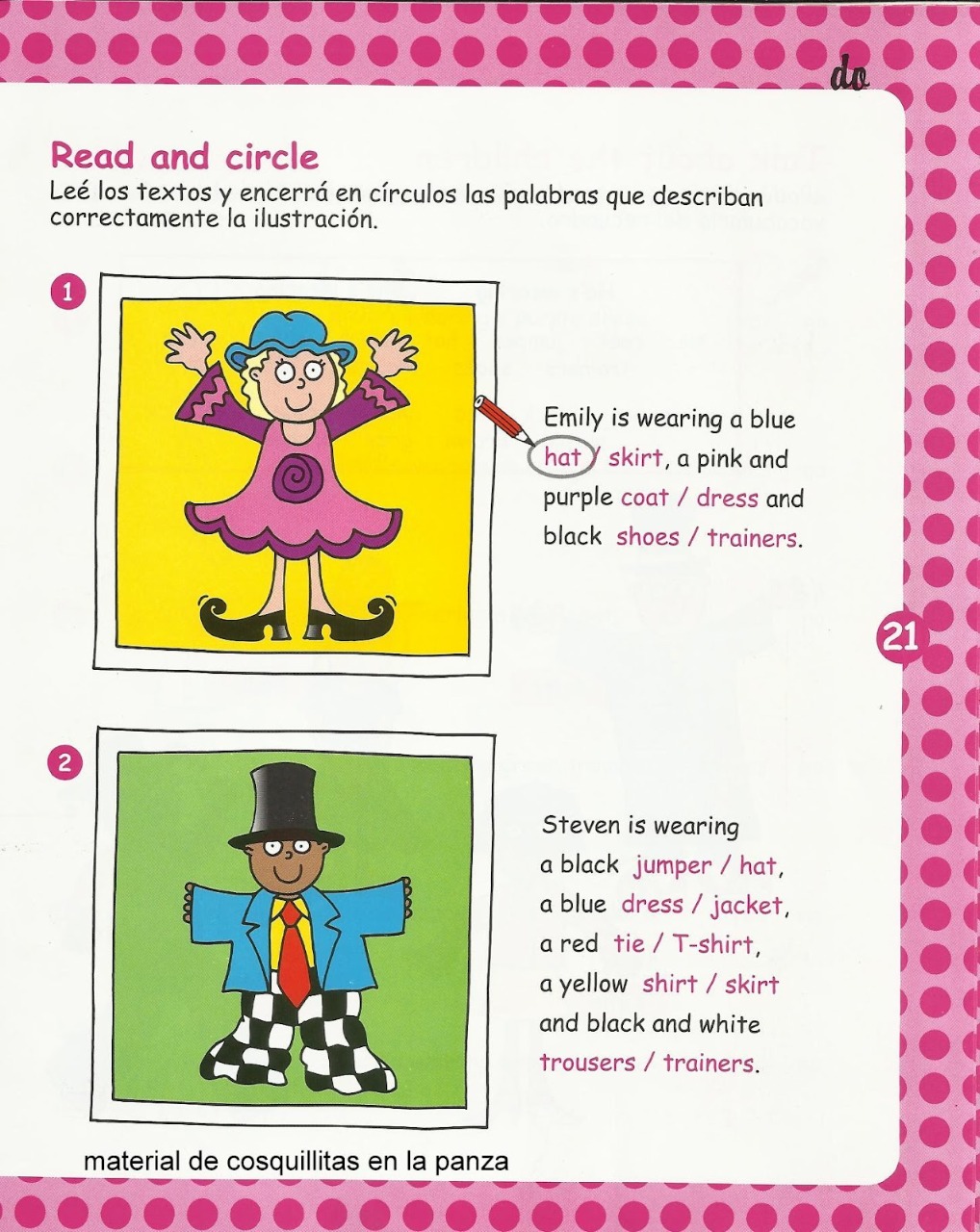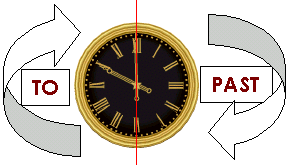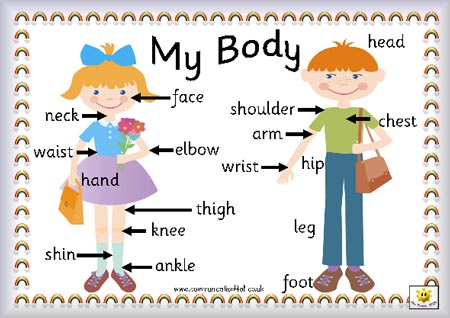Second Period
OBJECTIVES GRADE
Despertar el interés y la necesidad en los estudiantes por el aprendizaje significativo del idioma inglés fortaleciendo su creatividad y su capacidad de asombro.
STANDARDS
Comprendo textos cortos sencillo e ilustrados sobre temas cotidianos personales y literarios. Comprendo cuentos cortos o lo que me dice mi profesor en clase. Participo en conversaciones cortas usando oraciones con estructuras predecibles. Mi pronunciación es comprensible y hablo de manera lenta y pausada. Escribo pequeños textos sencillos sobre temas de mi entorno. Mi vocabulario se limita a temas y referentes cercanos y conocidos
Lesson 1. The time
Days of the week. Días de la semana
Vamos a afianzar otros conceptos básicos, como son los días de la semana, que en inglés son los siguientes:
Monday: Lunes.
Tuesday: Martes.
Wednesday: Miércoles.
Thursday: Jueves.
Friday: Viernes.
Saturday: Sábado.
Sunday-Domingo.
Suggested activities
1. Here you are a couple of activities to review the days of the week.
If you click on the picture below you can listen to the names of the days of the week in order. // Pinchando en la imágen de abajo puedes escuchar el nombre de los días de la semana en orden.
https://www.angles365.com/classroom/homework4/unit1/daysweek.swf
2. Now, if you click on this other picture you can play to put the days of the week in order and see what happens./ Ahora, si pincha en esta dirección, puedes jugar a ordenar los días de la semana y veréis qué sucede.
https://www.lcfclubs.com/englishzone/phonicszone/flash/daysinorder.swf
3. Elaborar frases teniendo en cuenta los ejemplos
What do you do on sunday? (¿Qué haces los domingos?)
This tuesday is my birthday! (¡Este martes es mi cumpleaños!)
I love Fridays! (¡Me encantan los viernes!)
Friday is my favorite day! (¡El viernes es mi día favorito!)
4. Elaborar la ficha
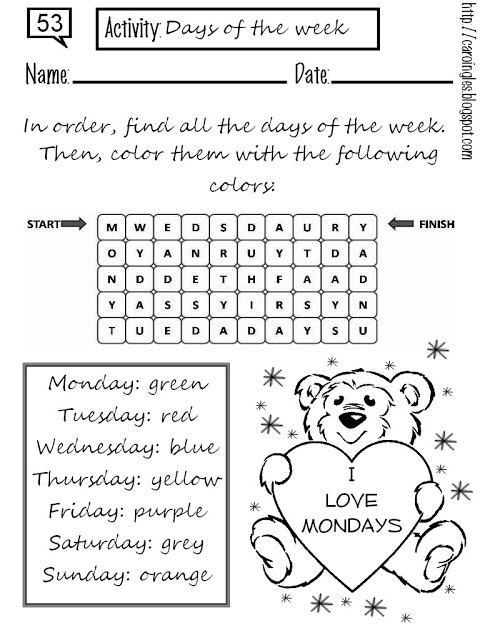
5. Practica la pronunciación que se presenta en los videos
Months of the years

|
ENGLISH |
SPANISH |
|
JANUARY |
ENERO |
|
FEBRUARY |
FEBRERO |
|
MARCH |
MARZO |
|
APRIL |
ABRIL |
|
MAY |
MAYO |
|
JUNE |
JUNIO |
|
JULY |
JULIO |
|
AUGUST |
AGOSTO |
|
SEPTEMBER |
SEPTIEMBRE |
|
OCTOBER |
OCTUBRE |
|
NOVEMBER |
NOVIEMBRE |
|
DECEMBER |
DICIEMBRE |
Diálogos o frases con estas palabras:
- What do you do on Sunday? (¿Qué haces los domingos?)
- This Tuesday is my birthday! (¡Este martes es mi cumpleaños!)
- I love Fridays! (¡Me encantan los viernes!)
- Friday is my favorite day! (¡El viernes es mi día favorito!)
- What´s your month´s birthday? (¿Cuál es el mes de tu cumpleaños?)
- It´s June. (Es Junio)
Suggested Activities
1. Practica la pronunciación
2. En cada recuadro escribe en ingles el mes que corresponde, observa las imágenes que te guían.
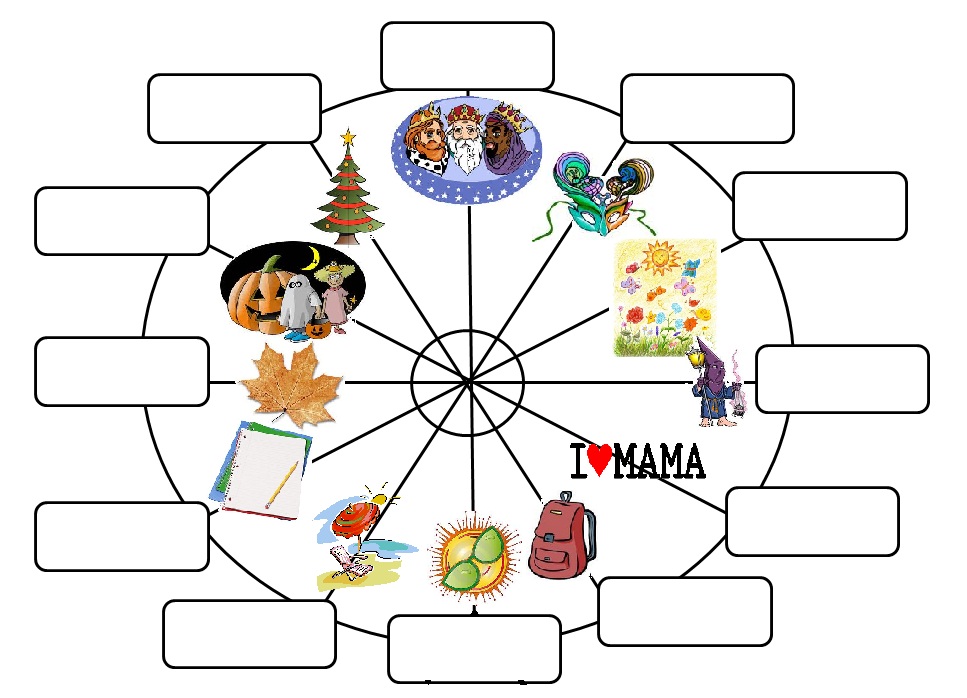
3. Ordena las palabras y descubre el mes secreto
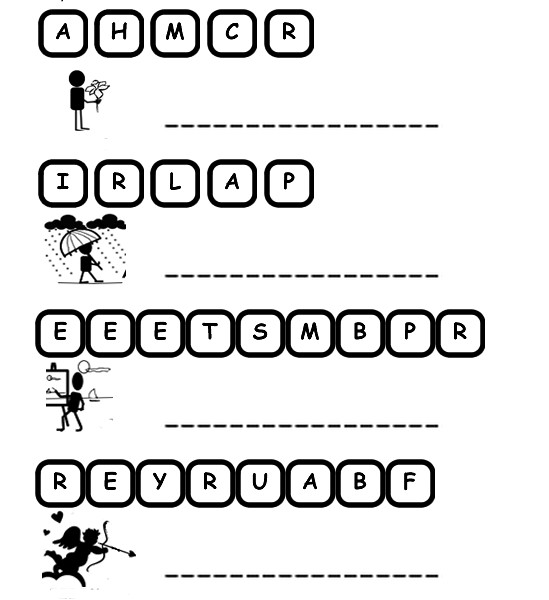
(o’clock)La hora
Siempres se usa "IT'S"
Cuando decimos la hora en español siempre decimos "son las" antes de decir qué hora es. Por ejemplo: Son las cinco en punto.
La traducción en in inglés de "son las" es it's (pronombre it + verbo is) y cumple exactamente el mismo propósito, así que lo colocaremos delante de la hora.
Estructura:
It's + hora completa
Por ejemplo:
It's five o'clock. (Son las cinco en punto)
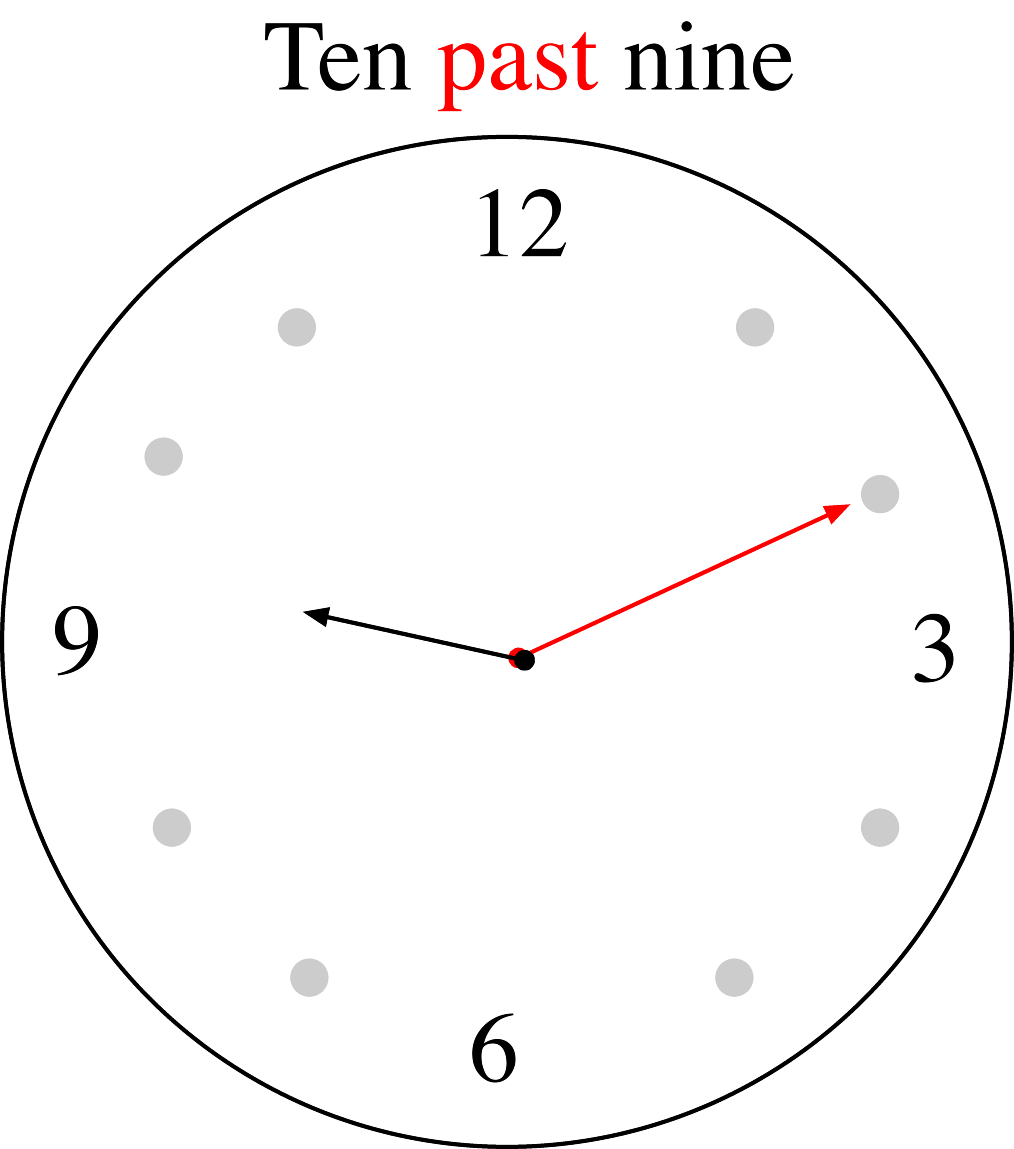 Primera media hora: PAST
Primera media hora: PAST
Durante la primera media hora de cada hora usaremos la preposición past.
Estructura: It's + minutos + past + la hora
Por ejemplo:
- 9:10 - ten past nine
- 2:03 - three past two
- 11:29 - twenty-nine past eleven
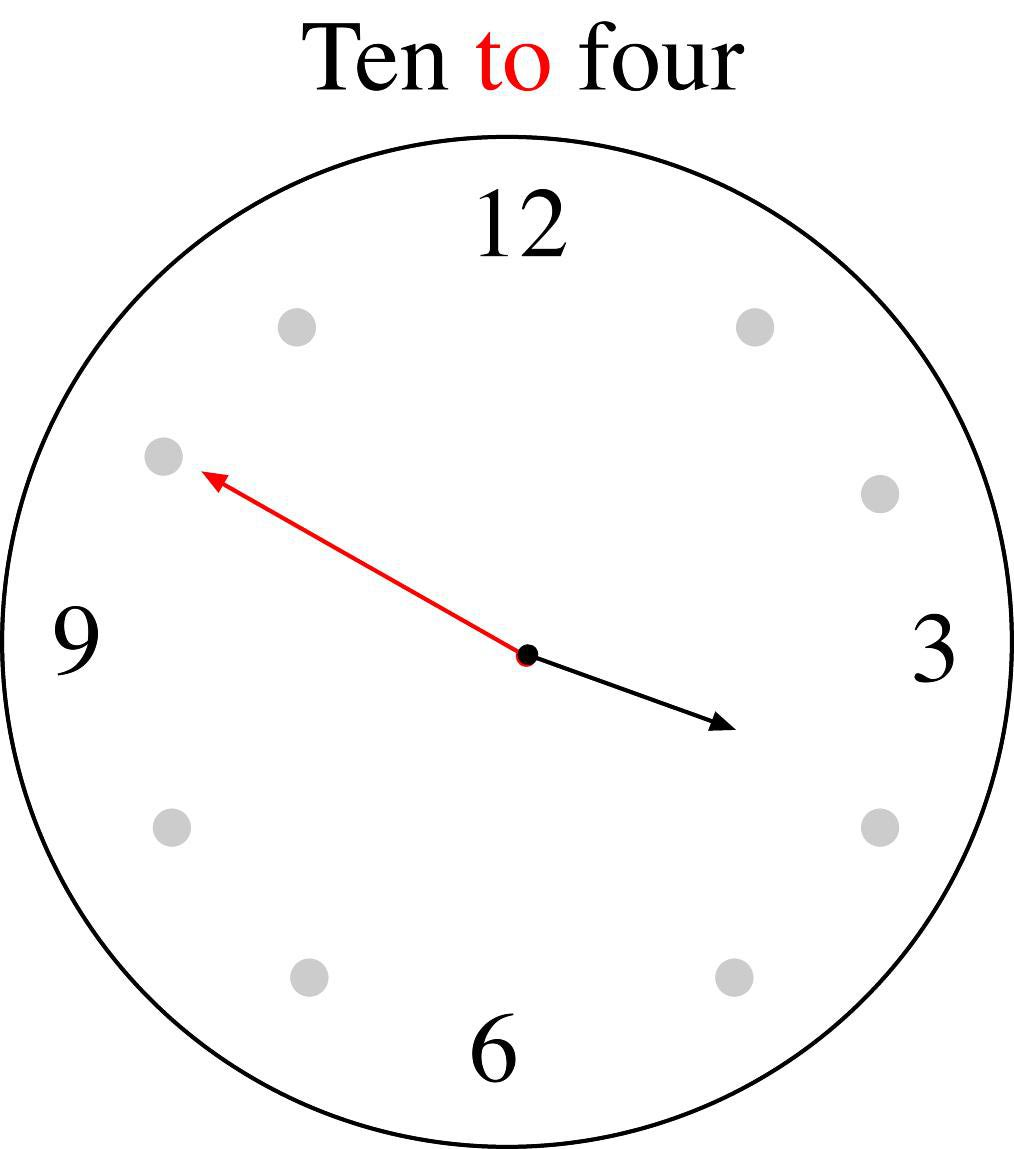 Segunda media hora: TO
Segunda media hora: TO
Durante la segunda media hora de cada hora usaremos la preposición to.
Estructura:It's + minutos + to + la hora siguiente
Por ejemplo:
3:50 - It's ten to four
2:35 - It's twenty-five to three
11:42 - It's seventeen to eleven
Introducción a las preposiciones
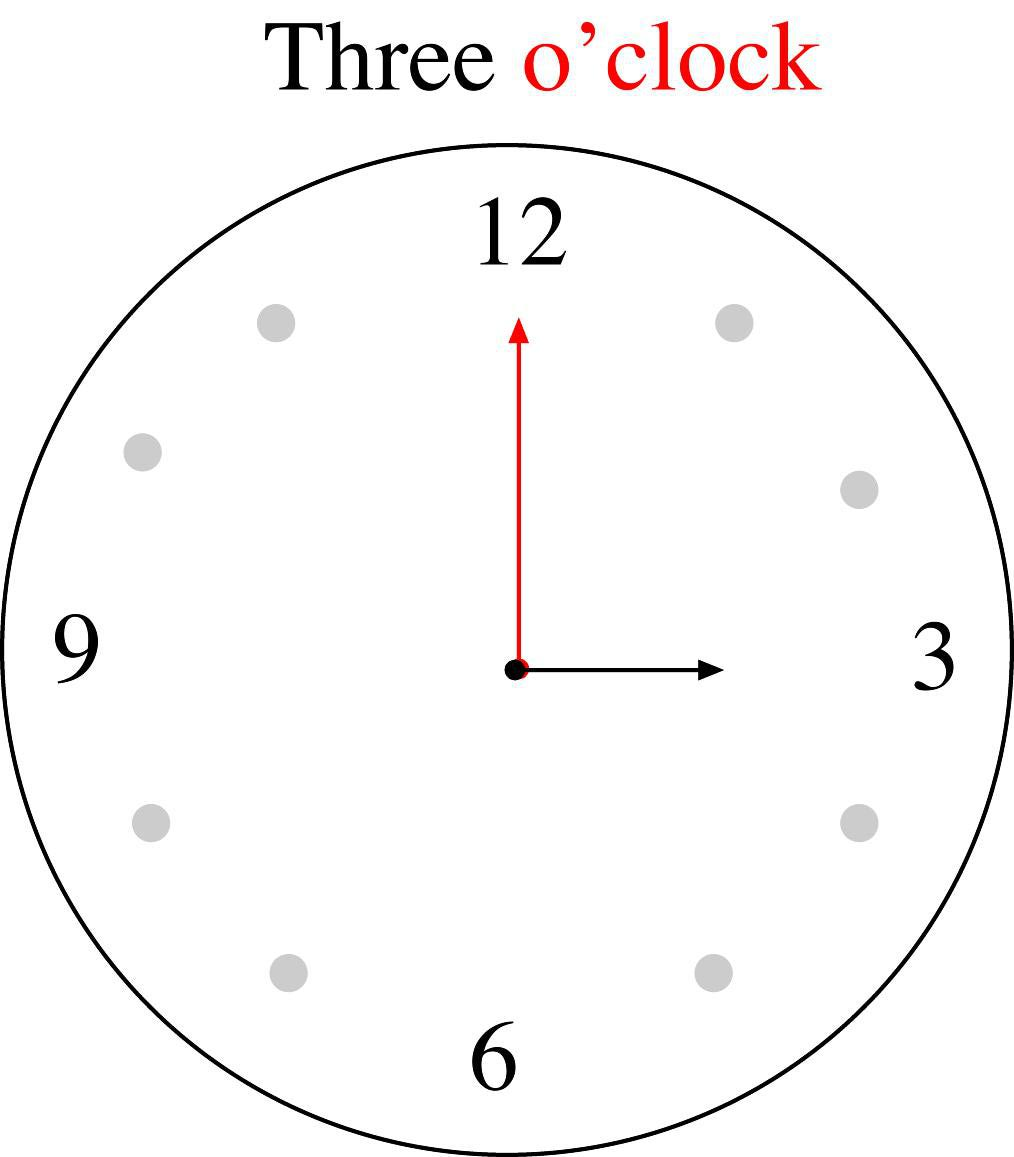
O'CLOCK (_ _:00)
Decimos o'clock para hablar de una hora en punto.
Estructura:It's + hora + o'clock
Por ejemplo:
3:00 - It's three o'clock
7:00 - It's seven o'clock
11:00 - It's eleven o'clock
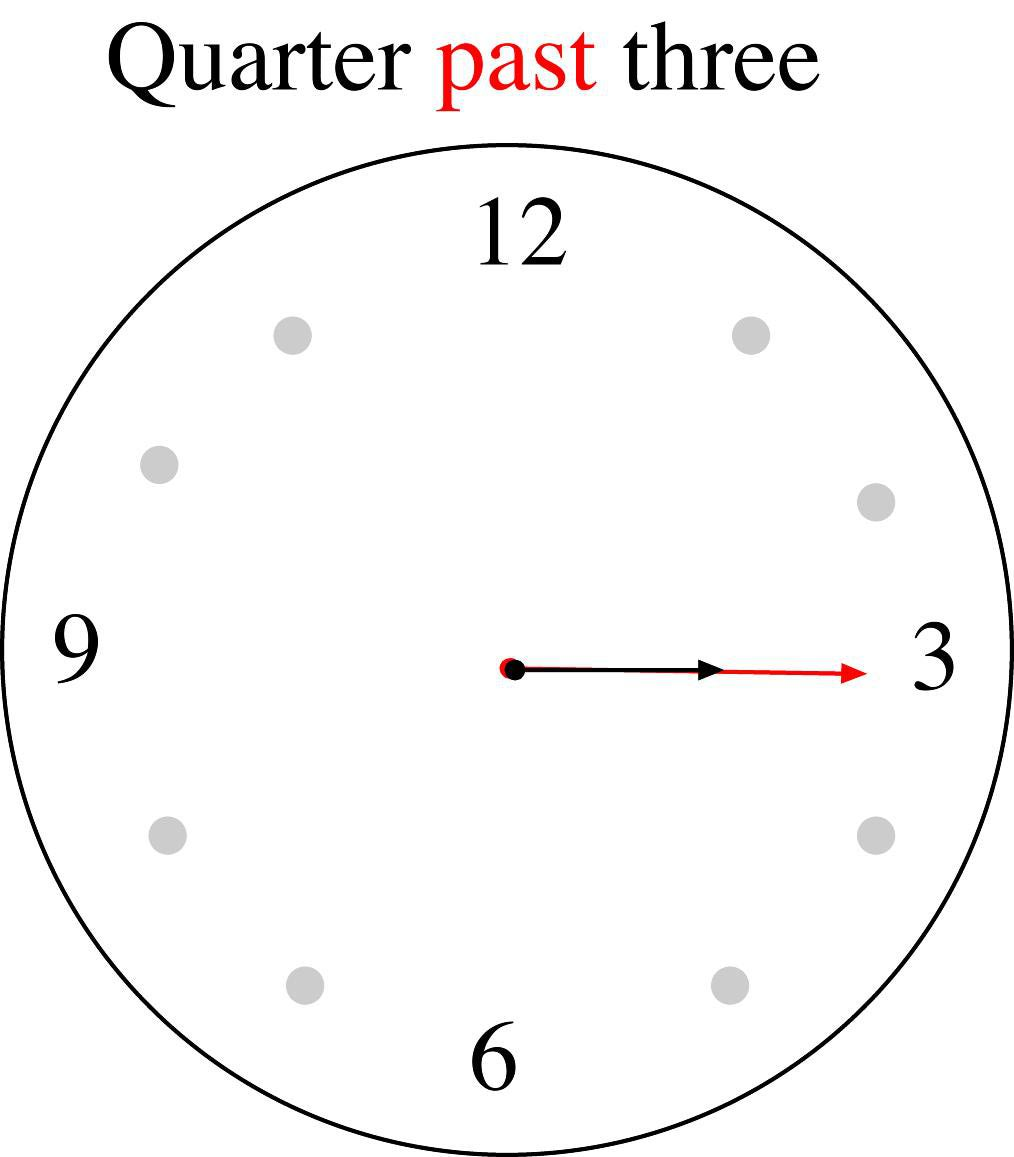 QUARTER PAST (_ _:15)
QUARTER PAST (_ _:15)
Qurter past quiere decir que son "las y cuarto" y se usa solo cuando el reloj marca y cuarto dentro de la primera media hora.
Estructura: It's + quarter past + hora
3:15 - It's quarter past three
7:15 - It's quarter past seven
11:15 - It's quarter past eleven
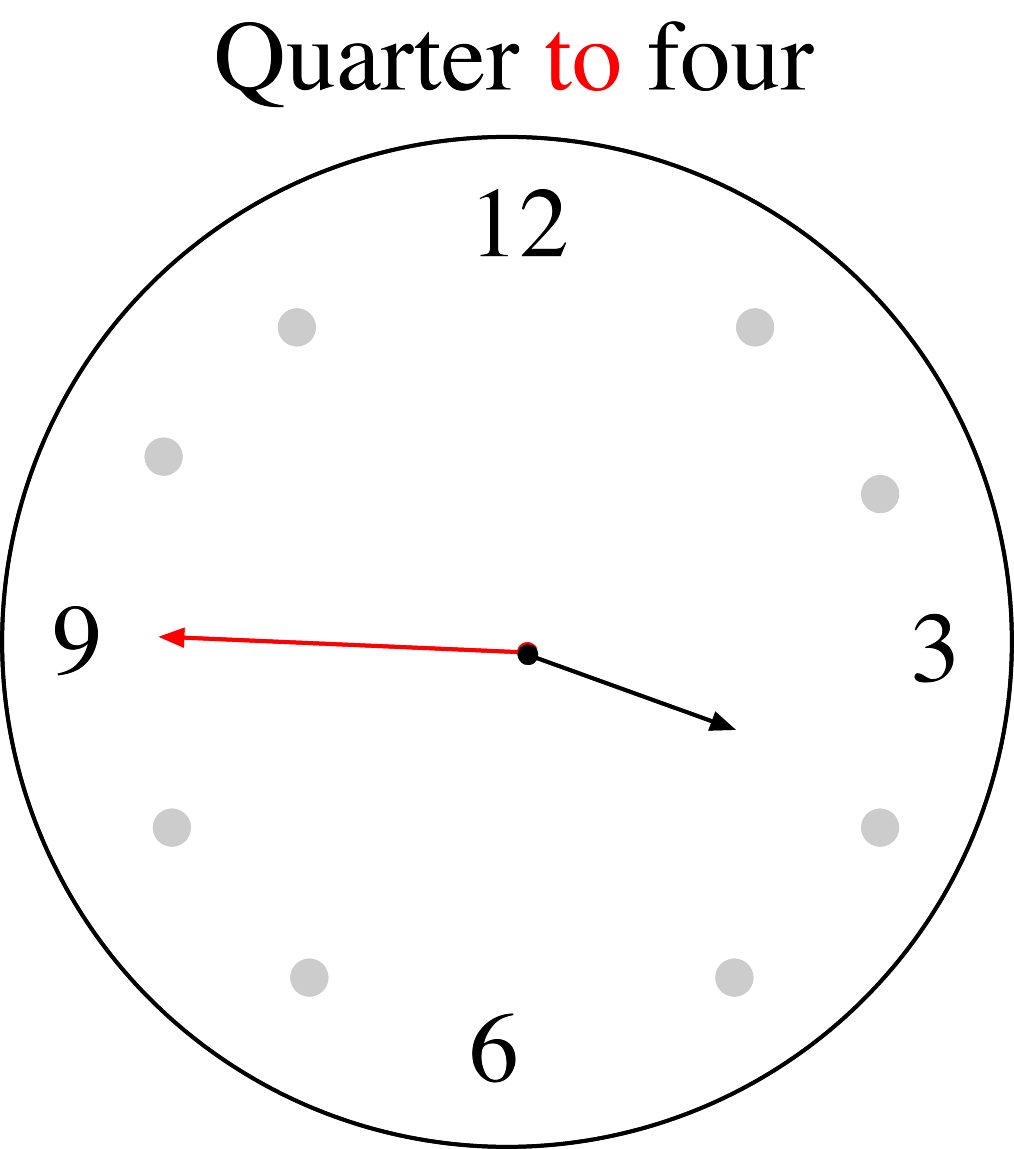 QUARTER TO (_ _:45)
QUARTER TO (_ _:45)
Quarter to quiere decir que son "quince para las" y se usa solo cuando el reloj marca y cuarenta y cinco dentro de la segunda media hora. Debe decirse la hora siguiente.
Estructura:It's + quarter to + hora siguiente
Por ejemplo:
3:45 - It's quarter to four
7:45 - It's quarter to eight
11:45 - It's quarter to twelve
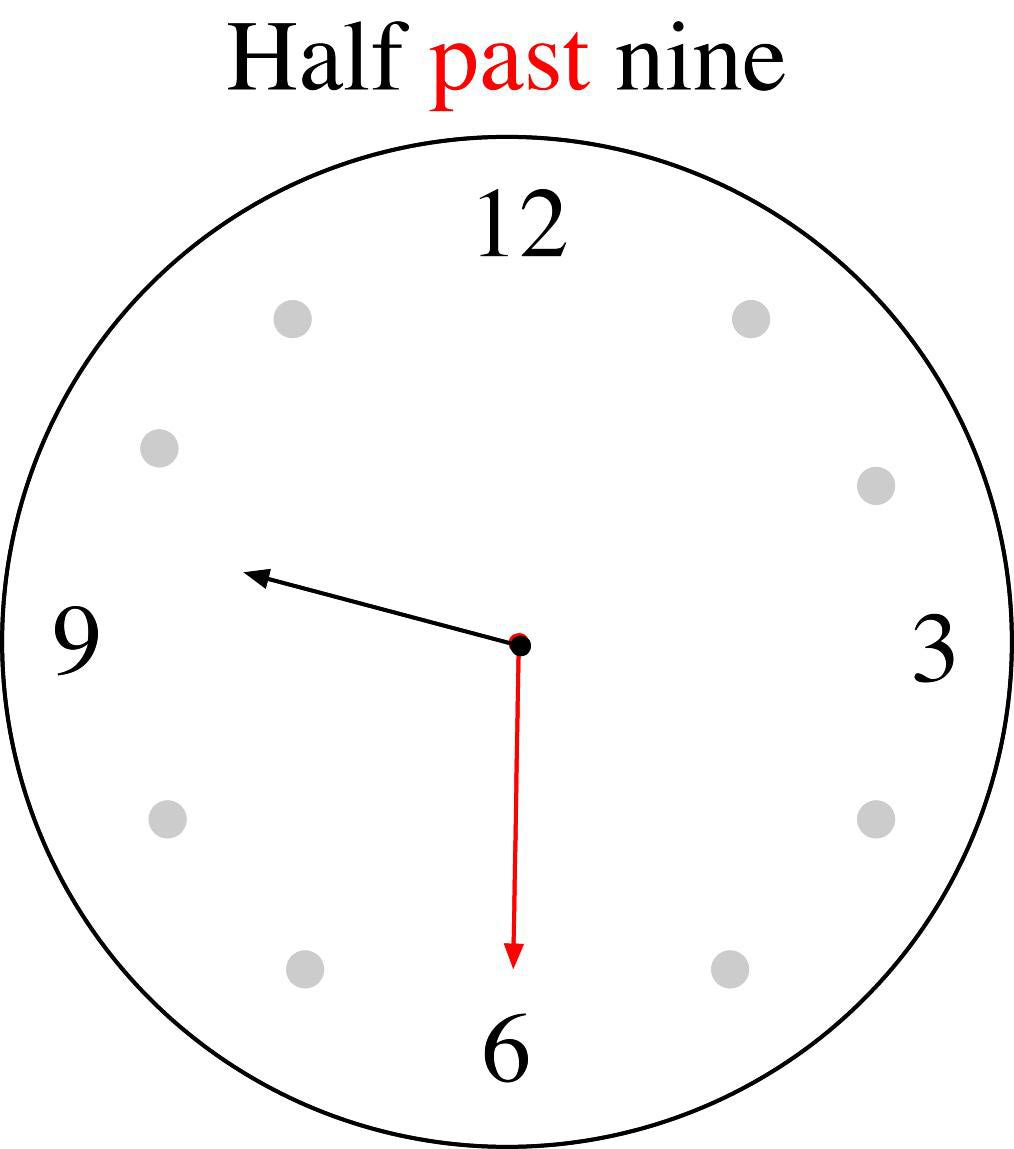 HALF PAST (_ _:30)
HALF PAST (_ _:30)
Half past quiere decir que son "y media".
Estructura: It's + half past + hora
Por ejemplo:
3:30 - It's half past three
9:30 - It's half past nine
11:30 - It's half past eleven
Suggested activities
1. Escribe las siguientes horas utilizando numerales cardinales en letras y las preposiciones “past” y “to”.
4.15 - It's a .
15.40 - It's .
16.00 - It's .
18.30 - It's .
10.25 - It's .
12.50 - It's .
21.45 - It's .
07.55 - It's .
11.10 - It's .
24.00 - It's / It's .
12.00 - It's / It's .
2. ¿Cómo escribirías en Inglés las siguientes horas? How would you write in English the following hours?
LAS CINCO EN PUNTO:
AS SEIS MENOS CUARTO:
LAS NUEVE MENOS DIEZ:
SON LAS OCHO MENOS DIEZ:
SON LAS DIEZ Y CINCO:
LAS DOS Y MEDIA:
LAS SEIS MENOS VEINTE:
LAS ONCE MENOS VEINTE:
LAS DOS Y CUARTO:
SON LAS SIETE Y DIEZ:
3. ¿Cómo escribirías en español las siguientes horas? How would you write in Spanish the following hours?
TWENTY TO SIX:
TEN TO NINE:
HALF PAST TWO:
FIVE O´CLOCK:
IT IS FIVE PAST TEN:
IT IS TEN TO EIGHT:
QUARTER TO SIX:
IT IS TEN PAST SEVEN:
TWENTY TO ELEVEN:
QUARTER PAST TWO:
4. Visita estos juegos interactivos, diviértete y aprende la hora
https://www.oswego.org/ocsd-web/games/bangontime/clockwordres.html
https://conteni2.educarex.es/mats/14452/contenido/
https://www.xtec.cat/ceipvallmoll/swf/time.swf
https://www.englishexercises.org/makeagame/viewgame.asp?id=1648
Expresiones de tiempo (Today, now)
Para situar acontecimientos, hechos, actividades, etc. en un momento concreto, se utilizan expresiones de tiempo como la siguientes:
- Yesterday - today - tomorrow (Ayer - hoy - mañana)
- yesterday morning - this afternoon - tomorrow evening (ayer por la mañana - esta tarde - mañana por la tarde/noche
Observe las expresiones que se refieren a la noche (night):
- last night - tonight - tomorrow night (anoche - esta noche - mañana por la noche)
Para referirse a los días de la semana, los meses, las estacione, los años y los siglos se utilizan las palabras last, this y next :
- last week - this month - next year (la semana pasada - este mes - el próximo año)
- last Monday - this April - next century (el lunes pasado - este abril - el próximo siglo)
- last winter - this summer - next spring ( el invierno pasado - este verano - la próxima primavera)
I was in Paris last week. - Estuve en París la semana pasada.
I am in Madrid this week. - Estoy en Madrid esta semana.
I'll be in London next week. - Esteré en Londres la semana próxima.
Se utiliza la proposición on para los días de la semana y para la expresión ´a tiempo´:
on Monday - el lunes
on Saturday morning - el sábado par la mañana
on weekdays - los días laborables
on time - a tiempo
Y la preposición in para las distintas partes del día, meses, años y estaciones:
in the morning - por la mañana
in March - en marzo
in 2000 - en 2000
in (the) autumn - en otoño
Y estas expresiones que utilizan at:
at night - por la noche
at the weekend - el fin de semana
at six o'clock - a las seis
at Christmas - en Navidad
Suggested Activities
1. Escribe la expresión que hace falta
- My English class starts 7 o'clock the evening.
- I never work the weekend.
- Jane's birthday is 24th May.
- It hardly ever snows in Barcelona the winter.
- The exam is Friday morning.
- The film finishes midnight.
- Students are on holiday Christmas and Easter.
- I was born 1983.
- Teenagers often watch TV night and they are tired the morning.
- John often goes for a walk Saturdays.
Lesson 2. Personal agenda (Using Have to) Weather conditions and clothes
Seasons of the year
Y seguimos con las estaciones del año, que en inglés son estas:

Suggested Activities
https://www.educaplay.com/es/recursoseducativos/551298/ingles.htm
The Weather
Los siguientes términos en inglés se utilizan al hablar del clima:
|
what's the weather like? |
¿Qué tiempo hace? |
|
WEATHER |
|
|
it's ... |
está ... |
|
sunny |
soleado |
|
cloudy |
nublado |
|
windy |
ventoso |
|
foggy |
Hace niebla |
|
stormy |
Hace tiempo tormentoso |
|
|
|
|
it's ... |
está ... |
|
raining |
lloviendo |
|
hailing |
granizando |
|
snowing |
nevando |
|
what a nice day! |
¡Qué día tan bonito hace! |
|
what a beautiful day! |
¡Qué día tan hermoso! |
|
it's not a very nice day |
No hace muy buen día |
|
what a terrible day! |
¡Hace un día terrible! |
|
what miserable weather! |
¡Qué tiempo tan malo! |
|
it's starting to rain |
Está empezando a llover |
|
it's stopped raining |
Ha parado de llover |
|
it's pouring with rain |
Está lloviendo muy fuerte |
|
the weather's fine |
Hace buen tiempo |
|
the sun's shining |
Está luciendo el sol |
|
there's not a cloud in the sky |
El cielo está completamente despejado |
|
the sky's overcast |
El cielo está cubierto de nubes |
|
it's clearing up |
Se está despejando |
|
the sun's come out |
El sol ha salido |
|
the sun's just gone in |
El sol justo se ha tapado por las nubes |
|
there's a strong wind |
Hace un viento muy fuerte |
|
the wind's dropped |
El viento ha remitido |
|
that sounds like thunder |
Eso ha sonado como un trueno |
|
that's lightning |
Hay relámpagos |
|
we had a lot of heavy rain this morning |
Ha llovido muy fuerte esta mañana |
|
we haven't had any rain for a fortnight |
No hemos tenido lluvia en dos semanas |
Suggested Activities
1. Oh no! It won´t stop raining. Watch the video, sing the song and... let´s see what happens! // ¡Oh, no! ¡No para de llover! Mira el vídeo, canta la canción y... ¡a ver qué pasa!
Visita estos link para que practiques la pronunciación del vocabulario del tema
The body parts
Suggested Activities
1. Entra al juego y practica la escritura
https://genmagic.org/generadores/genword/body_nena.html
2. Encuentra las palabras en la sopa de letras
4. Desarrolla el crucigrama
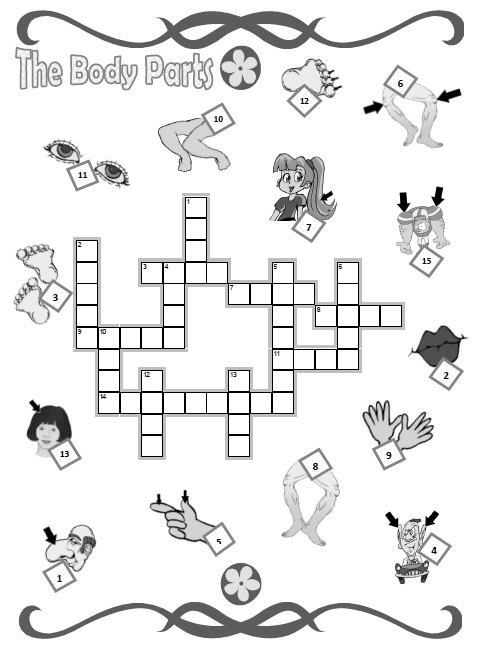
The clothes

Suggested Activities
Observa cada una de las fichas y desarrolla la actividad propuesta
